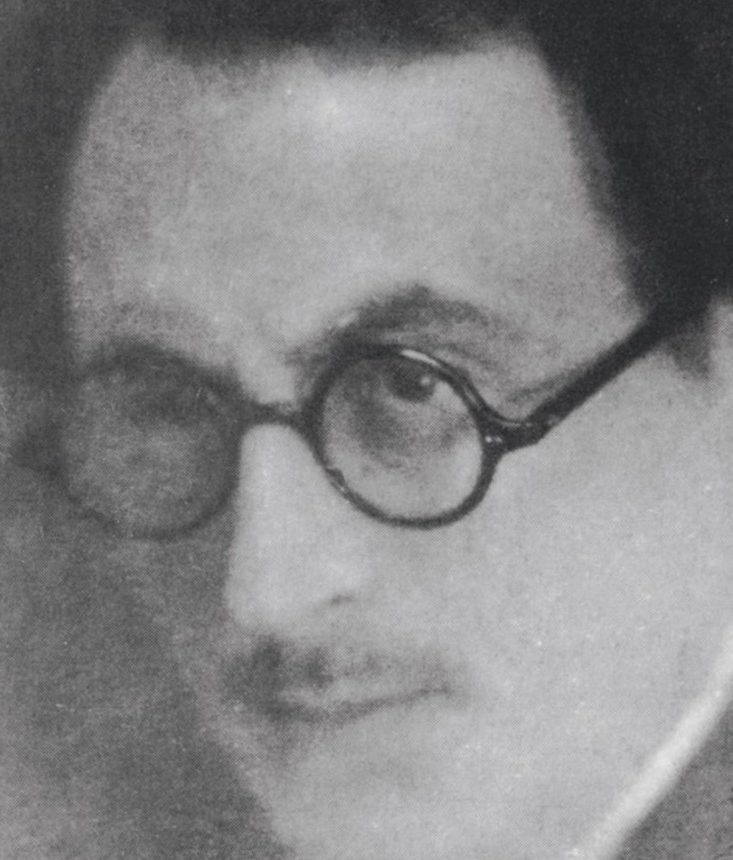Walter BONDY
January 2, 2019David BRAININ
January 2, 2019Boris BORVINE FRENKEL
KALISZ (POLAND) 1895 – PARIS 1984
Borvine Frenkel grew up in a family of peasants in Poland and received a traditional Jewish education. During World War I, he was an apprentice engraver and went to study architecture in Lwow in 1919. In 1920, after being briefly imprisoned in Warsaw due to his anarchist activities, he decided to go to Berlin. The years he spent in Berlin were decisive; he got in touch with Jewish intellectual as well as literary circles, and met Elsa Lasker-Shüler, Peretz Markish, and Hayim Nahman Bialik. Borvine Frenkel then enrolled as a sailor aboard a cargo ship and traveled all over the world, from Africa to Australia.
In 1924, he stopped in Paris but left immediately for Brussels where he lived until 1930. He dedicated his time to paintings and completed his studies at the Ecole des Arts Décoratifs (decorative arts school). The paintings he produced in Brussels reflect soft tonality and depict smooth shapes. Borvine Frenkel also took an interest in theater and designed the set for Andreyev’s play The Seven That Were Hanged. He set up a drama workshop and put on several plays from the Russian and Yiddish repertoire.
In 1930, Brussels’ Fine Arts museum dedicated him an exhibition. He was expelled from Belgium shortly afterwards and moved to Paris, which he only left during the Occupation. In 1937, he took part in the foundation of the Jewish Painters Association, which brought together 200 artists. In 1939, he found refuge in the southwest of France.
Following the war, he was devastated by the loss of his friends and relatives. He took care of the Jewish Painters Association and organized the publication of the journal Nos Artistes (Our Artists). He continued his research in the painting field while also working as an art and literary critic, notably for the Yiddish newspaper Unzer Stimme.
Stories of Jewish Artists of the School of Paris 1905-1939
FRENCH-ENGLISH
Capitale des arts, le Paris des années 1905-1939 attire les artistes du monde entier. De cette période de foisonnement, un terme est resté, celui d'Ecole de Paris, qui recouvre une grande diversité d'expression artistique. Dans ce brassage dont Montparnasse est le creuset, un groupe se distingue : celui des artistes juifs venus de Russie, de Pologne et d'Europe centrale. Si leurs styles sont variés, un destin commun les rassemble : ils fuient l'antisémitisme de leur pays d'origine. Certains ont connu la célébrité dès les années 1920, tels Soutine, Lipchitz ou Chagall. D'autres n'ont pas eu le temps ou la chance d'y accéder. Près de la moitié a péri dans les camps de concentration nazis.
From 1905 to 1939, Paris attracted artists from all over the globe as the capital of the art world. This period of artistic proliferation became known as the School of Paris, and includes a great diversity of artistic expression. Within the teeming art world centred on Montparnasse, one group set itself apart: Jewish artists from Russia, Poland, and Central Europe. Although their styles were diverse, they shared the common fate of fleeing anti-Semitic persecutions in their home countries. Some became famous in the 1920s, such as Soutine, Lipchitz, and Chagall, while others did not have the time or the luck to gain renown. Nearly half of these artists died in Nazi concentration camps.





